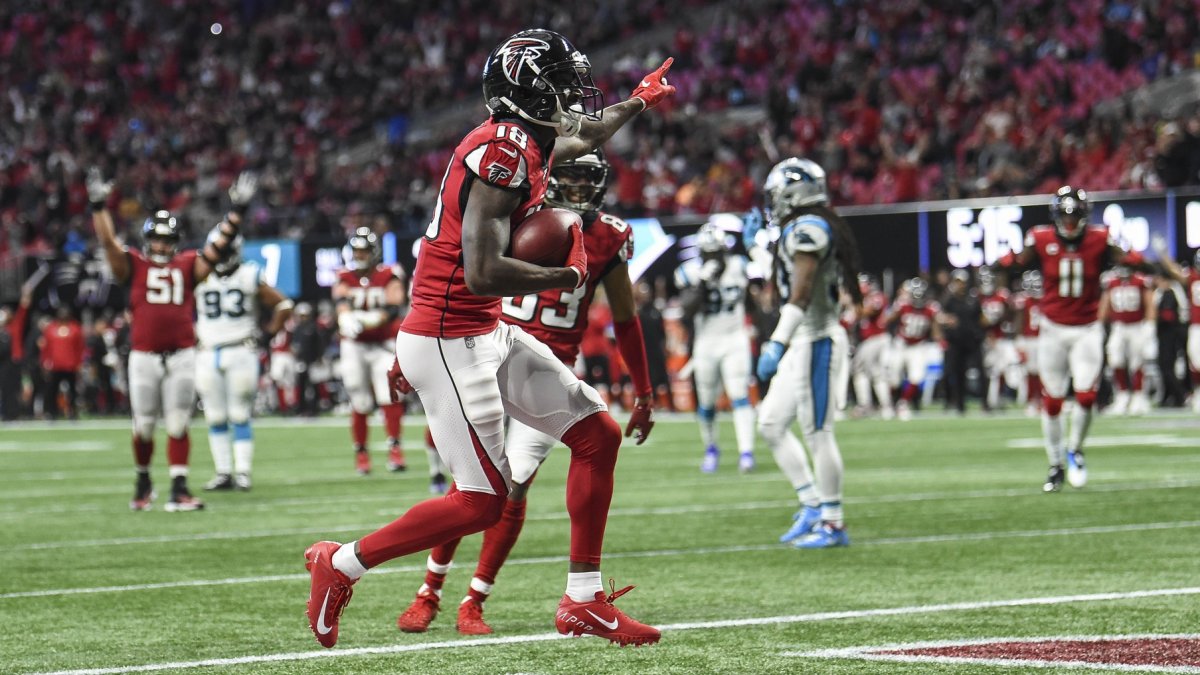Figuring out when a player might peak in the NFL is an incredibly inexact science because of the ridiculous amount of variables that accompany any given play, game and season. Even the league’s most talented studs can bust because of factors like injuries, irrational coaching and/or brutal teammate performance.
Today’s topic involves the idea that specific positions might thrive at a certain experience level. There will, of course, be exceptions. And not every X-year player is created equal, considering that there are potential one- to four-year disparities in age. Still, determining when NFL wear and tear might begin to outweigh the advantage gained from experience could prove useful in predicting breakout fantasy performances.
I took the top-12 PPR fantasy performers by position from 2010-2019 and determined how many occurred with X-years of NFL experience.
| Year | QB | RB | WR | TE |
| 1 | 5% | 12% | 2% | 2% |
| 2 | 13% | 16% | 11% | 11% |
| 3 | 13% | 21% | 17% | 15% |
| 4 | 6% | 13% | 10% | 10% |
| 5 | 5% | 9% | 16% | 11% |
| 6 | 4% | 10% | 15% | 7% |
| 7 | 9% | 8% | 9% | 9% |
| 8 | 5% | 8% | 8% | 9% |
| 9 | 3% | 3% | 4% | 7% |
| 10+ | 38% | 2% | 8% | 20% |
Some observations:
- High-scoring rookie fantasy performers are few and far between. This is particularly true for pass-catchers and QBs who don’t possess a rushing floor.
- There’s a second- *and* third-year jump at every position other than QB, which at least maintains its fairly robust 13% rate.
- The fourth year and on is when every position begins to fall off — except wide receiver.
- In general, it does make sense for things to dip after the fourth and fifth seasons considering this is when rookie contracts are up.
- The boom for WRs in Years 5 and 6 suggests that we shouldn’t be afraid to target those in their late-20s on second contracts.
- Football isn’t an old man’s game, except if you’re a future Hall of Fame quarterback or tight end.
- Running backs balling out after four seasons of service are few and far between.
We see the same takeaways even after giving RBs and WRs the benefit of the doubt and increasing our sample to top-24 players at their positions.
| Years | QB | RB | WR | TE |
| 1 | 5% | 10% | 5% | 2% |
| 2 | 13% | 15% | 14% | 11% |
| 3 | 13% | 19% | 13% | 15% |
| 4 | 6% | 14% | 11% | 10% |
| 5 | 5% | 11% | 14% | 11% |
| 6 | 4% | 10% | 14% | 7% |
| 7 | 9% | 8% | 10% | 9% |
| 8 | 5% | 6% | 7% | 9% |
| 9 | 3% | 4% | 4% | 7% |
| 10+ | 38% | 4% | 8% | 20% |
The “peak” season for each position in terms of high-end fantasy success seems to be the following:
- QB: 10+
- RB: 3
- WR: 3
- TE: 10+
This isn’t to say you should fade a second-year player just because there’s a higher percentage of third-year players who have balled out in recent history; it’s more of a useful guide to potentially identify some slept-on players entering these potential spike seasons.
Quarterback
A whopping 10 QBs *should* be their team’s Week 1 starter and have double-digit seasons of NFL experience. History tells us to expect four or five to flirt with QB1 status. My personal fantasy rankings are listed in parenthesis:
Exclusive content for premium subscribers

WANT TO KEEP READING?
Dominate Fantasy Football & Betting with AI-Powered Data & Tools Trusted By All 32 Teams
Already have a subscription? Log in



 © 2025 PFF - all rights reserved.
© 2025 PFF - all rights reserved.